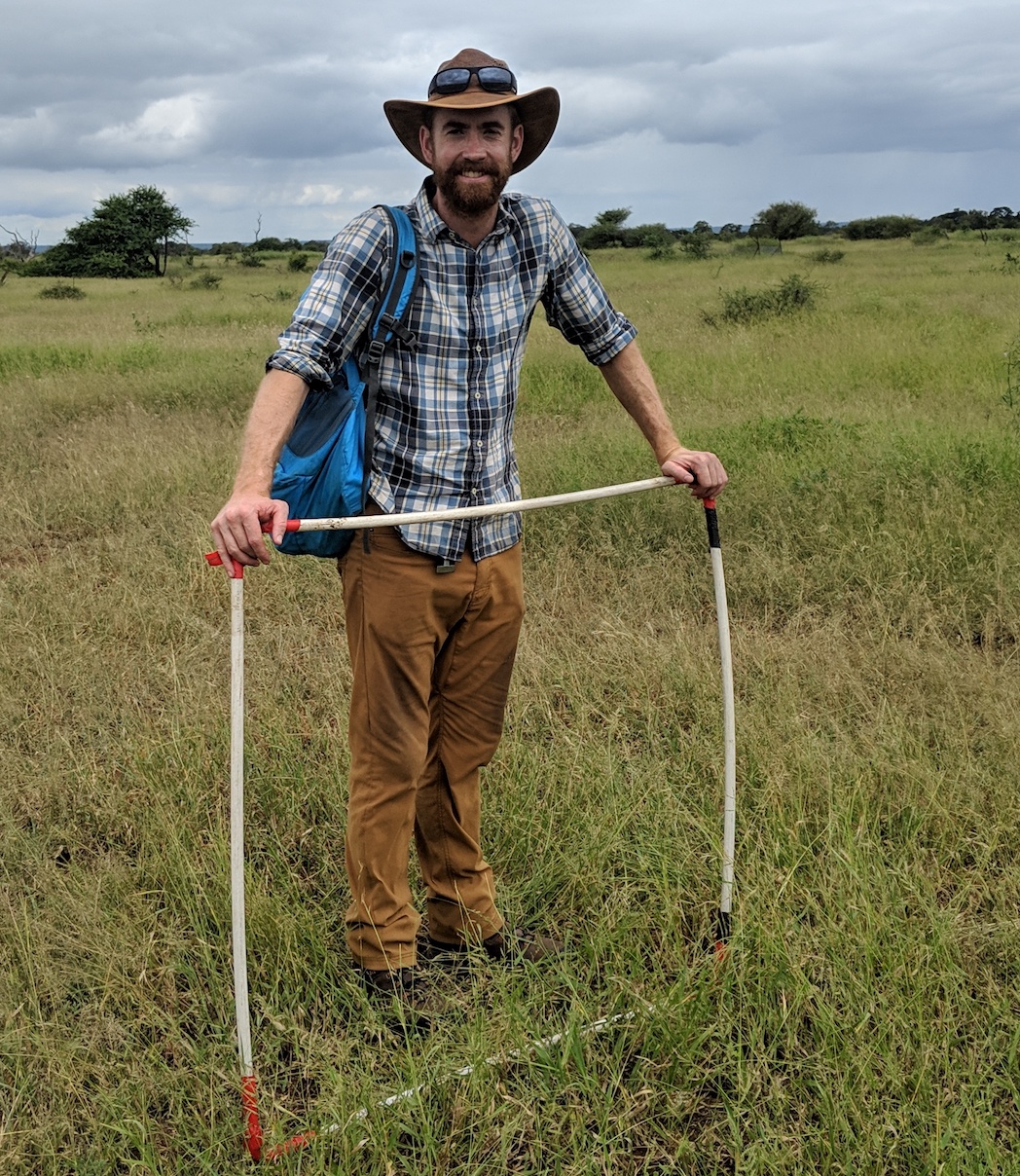The Big Picture: What Sustains Biodiversity

The recent surge of attention on biodiversity loss, sparked by a global assessment by the Intergovernmental Platform for Biodiversity and Ecosystem Services (IPBES), begs an ever-present question: what sustains biodiversity?
That question unites most ecologists, especially those who are part of the Long-Term Ecological Research (LTER) Network. At the Network’s 28 sites across the United States, hundreds of ecologists are studying how the country’s ecosystems work and what happens to those functions over decades, through the changes time brings and people cause, all of which determines the status of biodiversity.
But to get insights that will be useful for protecting biodiversity through policy and management, this site-specific knowledge must be scaled to landscape levels or bigger. Aggregating that knowledge to get a bigger picture are several synthesis working groups organized through the NCEAS-based LTER Network Office.
In this Big Picture roundtable, four researchers from a couple of these working groups share insights they are gaining about the ecological factors important to sustaining biodiversity across regions and continents.
Kim Komatsu and Kevin Wilcox are both leading a team that’s exploring how climate change and other global drivers affect plant communities now and into the future, which indicates conditions for biodiversity and biodiversity-supporting habitats. Jonathan Walter and Joan Dudney are part of a different team that is identifying the factors that stabilize ecological communities, looking particularly at the fluctuations in species’ populations and communities over time, how synchronized these fluctuations are, and the causes and consequences of the synchrony.
What findings from your synthesis research so far stand out to you as a major advancement in scientific knowledge about what sustains biodiversity?

Wilcox: Most current biodiversity research focuses on how biodiversity at small spatial scales – often within a single patch or community – drives ecosystem functions, such as forage, timber, or crop production. One of the major goals of our synthesis group was to assess whether the “patchiness” of a landscape [or the variability of its local ecological communities] stabilizes plant production through time. We found that, through time, different habitat patches were out of sync with each other. In other words, total plant growth in one patch didn’t peak in the same years as neighboring patches, which suggests that different patches do best under subtly different environmental conditions. This large-scale “patch asynchrony” was a major stabilizing factor for landscapes and highlights the importance of preserving a diversity of habitat types within landscapes.
Komatsu: We are also finding that communities of herbaceous plants, or non-woody plants, are relatively stable in response to experiments that simulate human-caused drivers, such as drought, nutrient pollution, and increased atmospheric carbon dioxide. That is, the plant communities we are studying don’t change even when scientists impose significant drivers on them experimentally. In our study, these experiments often don’t affect the total number of plant species in experimental plots, but they do alter the identities and abundances of the species present. Species that can’t tolerate the novel conditions decline and are eventually replaced by species that are better adapted. This means that, under altered environmental conditions, the ecological mechanisms that underlie biodiversity, such as competition for space and resources, seem to be maintained. This has important implications for maintaining biodiversity. If we care only about maintaining a certain number of species, then these ecosystems seem capable of managing themselves even under global changes. But I would argue that it is more important to maintain the right kinds of species in an ecosystem to sustain the functioning of that system and the services it provides to humans.

Walter: Many ecologists think about changes in biodiversity over the long run – how much is being lost or gained, and how fast. I was surprised when digging into our synthesis research to realize just how much measures of biodiversity in a given place can vary from year to year, so that we see high-diversity periods and low-diversity periods relative to a long-term average or trend. We are finding that these fluctuations are often synchronized across habitat patches within a site by climate variation and the dispersal of species.
Dudney: Often, studies of species diversity focus on one system because it’s really challenging to compare across different systems, like comparing apples and oranges. Using newly developed statistical tools, we’re also measuring how much species fluctuate in tandem, or synchronously, across long time-scales, which enables us to tackle bigger questions about which ecological communities may be more resilient or vulnerable to climate change. So far, we’re finding that ecosystems with lower species diversity and lower rainfall have bigger synchronous events, though their overall resilience to these events is relatively similar to that of higher diversity systems. Our preliminary results suggest that the relationships between biodiversity, stability, and resilience may be more nuanced than we thought.
If you were forced to pick one, what is the most interesting or surprising ecological pattern or factor that sustains biodiversity, especially given climate change?

Wilcox: The ability of communities to adapt to environmental changes always surprises me. When one species is lost from a community, another often steps in and takes its place. Although this compensation can sustain ecosystem services, such as carbon stored in plants, it can also result in invasions by exotic species. Therefore, it is important to study multiple aspects of biodiversity, not just the number of species within an ecosystem.
Dudney: I find it fascinating that disturbances, such as fires and pest outbreaks, are double-edged swords for diversity. Disturbances can enhance species diversity and help ecosystems adapt to changing conditions. Too much disturbance, however, can cause extinctions or ecosystem collapse. For a while now, people have tried to prevent and control disturbances, which in some areas has caused greater vulnerability to global warming. Perhaps a silver lining of climate change is that it challenges us to re-examine how we measure and interpret natural phenomena, enabling us to gain deeper insights into what sustains ecosystems and biodiversity.
Walter: Variability. It’s a bit counterintuitive because one might expect that a very stable, benign environment would be good, but variability creates opportunity. For example, areas with high variability in topography and soils tend to support relatively high amounts of biodiversity, because the environmental conditions create habitat diversity that supports a large variety of organisms. These areas are thought to be particularly important for conservation in light of climate change, because they can serve as refugia or stepping stones for range shifts as the climate changes.
Komatsu: [In our LTER synthesis work], we have been surprised to find that experimentally imposed changes to the availability of a variety of resources – such as water, nutrients, and carbon dioxide – all consistently change the identity of species within a plant community, but not the total number of species within it. These results suggest that resource availability on the whole is an important driver of biodiversity, and demonstrate that long-term experiments are key to understanding how biodiversity will respond to future global change and the consequences for ecosystem services.

What gives you hope that we can sustain biodiversity?
Walter: The many brilliant, dedicated people who are tackling this and related challenges, on many fronts. Not just those doing science, but also those influencing policy and leading societal change.
Komatsu: What makes me particularly hopeful is the environmental activism of the world’s youth, many of whom recognize the importance of protecting biodiversity to maintain sustainable and functional ecosystems.
Dudney: The emerging scientific community that values open source data, collaboration, and equity and inclusion gives me hope. With climate change, we’re all on the learning edge. If the LTER synthesis experience has taught me anything, it's that the learning edge is super challenging for everyone. Effective teamwork enables us to persist and push through walls. I am hopeful that with more interdisciplinary collaborations, bigger breakthroughs can be made.
Wilcox: The capacity for communication to policymakers, land owners, and the public has never been greater. As long as we can effectively communicate scientific findings describing the benefits of biodiversity and the dangers associated with its loss, I think we will be able to promote and sustain biodiversity in all its forms. We all just need to realize that we’re the ones who get to choose our future actions.
# # #
The LTER Network Office recently released a new call for synthesis proposals with a deadline of October 23, 2019. Eligibility is not limited to members of the LTER Network, although the synthesis must draw on LTER data. The synthesis working groups described above were funded in 2016 and 2017. Go to CFP details>
